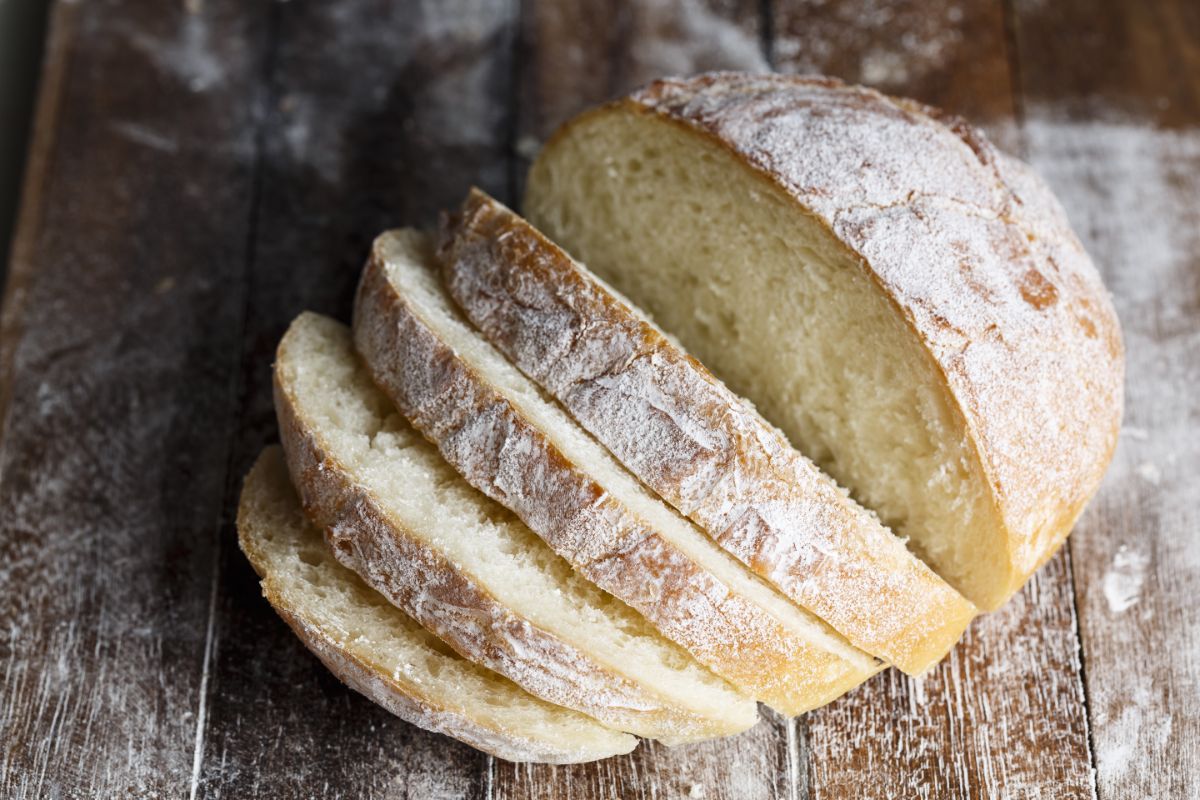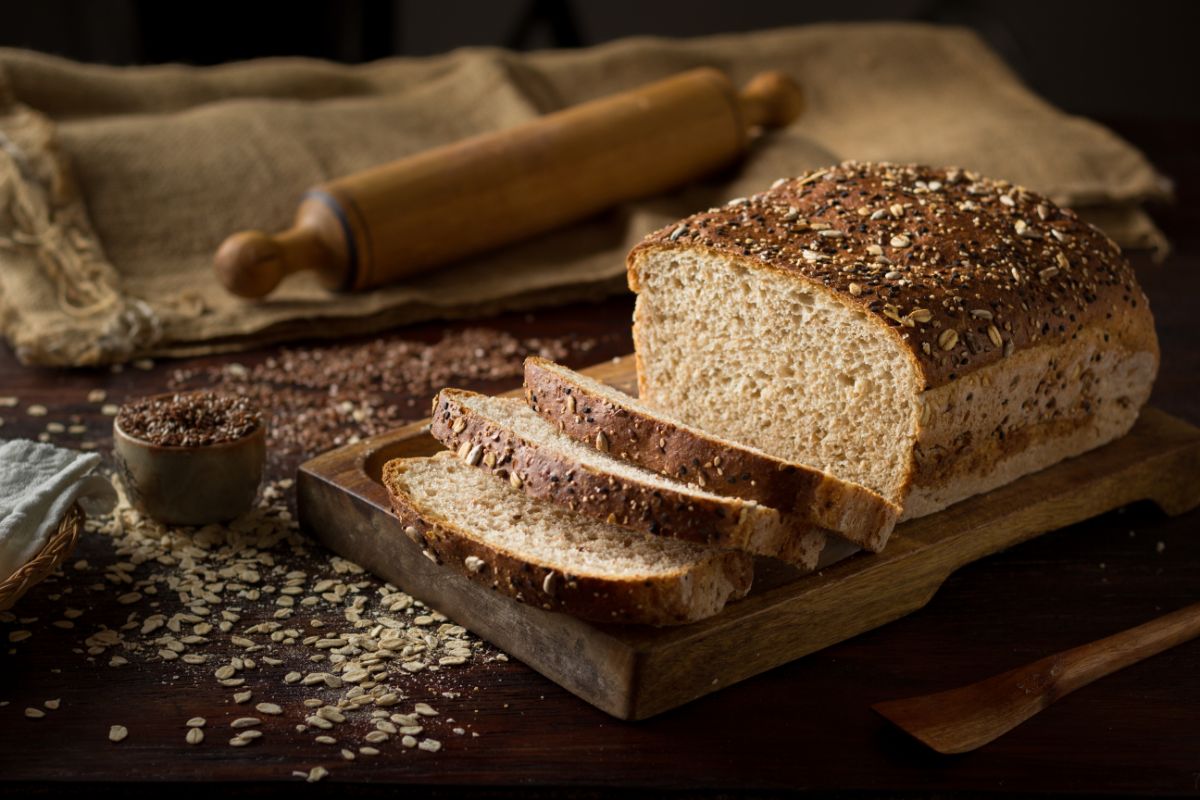If you’re having a problem with your quick bread turning out dry or crumbling after you take it out of the oven, there could be several reasons for this. In this guide, we’ll go over a few of the most common causes and ways to prevent them from happening again. They are all simple fixes that you can use to make your bread come out moist and delicious!

Top Reasons Why Your Quick Bread is Dry
1. Either the wrong type of fat or not enough fat was used
This usually happens when diet spreads or diet margarine are used in recipes. Most of these products contain water which can affect the dryness of quick bread. To fix this problem, use vegetable spreads, margarine, or fat that have at least 70% fat content or more.
2. The type of fat used can also affect the texture
Different kinds of cooking fat can impact the texture of baked goods. A quick bread that is made with vegetable shortening will have a texture more like cake instead of bread.
A better option is substituting equal amounts of shortening for butter or margarine. You should also add a couple of teaspoons of water for every cup of shortening that you use.
3. Higher altitudes can make moisture evaporate quicker
Depending on where you live, you may have to factor in altitude when baking. The higher the altitude, the faster the moisture in bread and the water contained in it will evaporate.
There are several ways that you can resolve this issue:
- Measure all dry ingredients very carefully. Only use the exact amount that you need.
- You might need to raise the baking temperature for your quick bread by 15 to 25 degrees, depending on the ingredients that the recipe calls for.
- Make sure that you don’t overbake the bread.
- Use brown sugar instead of granulated sugar.
- Adjust the amounts of liquid and/or flour used in your recipe to compensate for the altitude problem.
4. You used the wrong type of measuring cup
This is an easy mistake to make, especially if you’ve been using the same measuring cups to measure both your dry and liquid ingredients.
Liquid ingredients should be measured in plastic or clear glass measuring cups. Use nested measuring cups for dry ingredients. They should come in ½, ⅓, ¼, and 1 cup measurement settings.
5. The ratio of dry ingredients to liquids and fasts was higher than it should have been
You may have too much flour added to your ingredients. When flour is moved from the measuring cup to the mixing bowl, it quickly becomes compacted. This is why you probably have more flour than the recipe calls for. An easy way to fix this is by taking the flour you need using a nested measuring cup. Use the flat end of a knife or a metal spatula to remove any excess flour from the top of the cup.
How To Keep the Quick Bread Moist

1. Make a mix of 2 cups of water to 1 cup of sugar and pour the mixture into a spray bottle. Poke a few holes in the top of your loaf and gently spray the top of the bread with your sugar and water mixture. Wait a few minutes to let the mixture sink in. Feel free to repeat if needed. Just don’t overdo it, as this can make your bread too moist or soggy.
2. Add a liquor-based or citrus-flavored syrup, frosting, or glaze to the top of your loaf of bread. This will give your bread a little necessary added moisture.
3. Place your bread in an airtight container if you’re leaving it out. You can also wrap it securely in plastic wrap, store it in a plastic container with a zipper top and store it in your freezer for up to a month.
4. When you are ready to eat your bread, you can thaw it quickly in the microwave on the regular setting for about half a minute. If you have more time on your hands, you can set your bread out to thaw for about an hour or two. Adding a layer of glaze on top of your quick bread while it’s thawing will prevent it from drying out.
5. You can also put your bread in the freezer briefly after you take it out of the oven. Take the bread out of the pan, put it on a rack and then move it to the freezer. Putting the bread in the freezer for about half an hour will cause it to condense. It will also help to give it a moister texture.
These are just a few of the many ways that you can stop your quick bread from drying out. Some recipes may require a little trial and error to find the right consistency to your liking. Don’t be afraid to experiment if you’d like.
Prevent Quick Bread From Drying Out
There are a few ways that you can prevent your quick bread from drying out in the first place:
1. Place your pan on the top oven rack. Although every kind of oven is different, quick bread bake better when placed on the top oven rack. You can try different placements on this top rack to see how they affect the end result.
2. Mix the dry ingredients before the wet ingredients. A lot of recipes vary, but mixing the dry ingredients first tends to improve the quality of your bread. Just gather them together and start mixing before handling the wet ingredients.
3. Add the dry ingredients to the wet ingredients in your recipe. Adding the wet ingredients to the dry ingredients for quick bread just doesn’t work. It comes out in a sticky, sloppy mix that can be difficult to remove from your mixing bowl. Always add the dry ingredients to the wet ingredients. You can also add fruit, nuts, chocolate, or other items later.
4. Be careful with your glaze. The glaze is optional, and it provides a nice look and taste to your quick bread. To prevent this from becoming a messy affair, just lay down a large piece of aluminum foil to rest your cooling rack on. Then you can add your glaze without having to worry about cleaning your countertop afterward. Any excess glaze should be picked up by the foil.
5. Wrap your bread after it comes out of the oven. Another helpful trick is to wrap your quick bread while it’s still warm. Let them cool for a bit, and wrap them while they are still warm before you store or freeze them. Just keep in mind that this may not work for any breads that you apply glaze to.
Quick bread is easy to make and is perfect for holiday gatherings and other special events. They are a tasty dessert and are a fine complement to the main course. Using these tips can help to ensure their flavor and quality for many meals to come.
